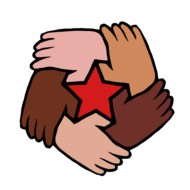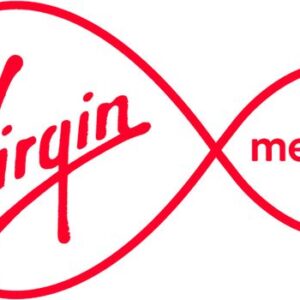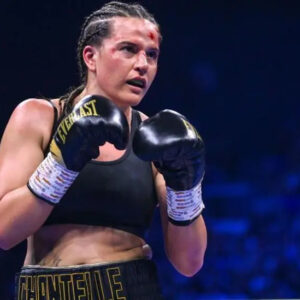The American — and not just American, interestingly, but worldwide — conservative clique is posing the question of “What is a woman” as a ‘gotcha’. Indeed, it is a rather interesting question, one that certainly ought to be posed in the interest of firmly answering for the betterment of society, especially for those who believe that gender roles are the foundation of society, as conservatives seem to believe. However, the goals of conservative groups peddling this question is exactly the opposite. Devoid of any objective analysis and of any ideological basis aside from reactionism, all they seek to do is invalidate the voices of millions. These conservative groups — in the US, spearheaded by the GOP and the Daily Wire corporation with its recent production of “What is a Woman” — do not seek to answer “What is a Woman”, for in order to actually do so they would also need to focus on the opposite and define what a man is. Nay, it is quite clear that through their myopic question of “What is a Woman” that their goal is not for the good of humanity, but the opposite: it is to justify further oppressive measures aimed at solidifying the male hierarchy.
In the trailer to “What is a Woman”, Matt Walsh poses the titular question and cites as justification for the film that there is not a firm answer to the question. Admittedly, this much is true: modern culture, at least in the US, does not have a firm answer of what a woman is — and neither does it have one for what a man is. And yet, despite this — that there is no clear definition of gender — Walsh proceeds with an obvious goal: to invalidate identity fluidity. It would be pointless, though, to repeat ad infinitum that conservatives are transphobic (among many other phobias, but transphobia is what is at hand) — that much is painfully clear to any queer person and anyone in tune with present happenings. Nor would it do to merely denounce and deny them, as has already been done completely and utterly. What is necessary is to firmly answer what Walsh and co. have utterly failed to. We must answer for ourselves, get our hands dirty, and engage with the question and its corollary in totality: What is a woman, and what is a man?
In order to do so, to actually, fully, and completely answer this incredibly sensitive question for ourselves, we must first examine precisely the subjects of the question: man, woman, and gender (the definition of the last can be found here). Absent any other aspects to this equation (I am not negating the existence of intersex and gender-queer people, merely simplifying the equation at hand), we may imagine the two, man and woman, to be two parts of the equation, two halves to one whole. Indeed, this manifests itself at present with the most commonly quoted point when asked what a man or woman is; when asked what a man is, most answer with something along the lines of ‘not a woman’ and vice-versa. This logic is circular, but provides substance to the premise that man and woman are two, opposite components like light and dark, good and evil, hot and cold, and so on: one cannot exist without the other. Delving further into this opposition, the question must then be posed: what gives this opposition substance? By this I mean: what internal components and contradictions of man and woman enable this opposition to exist in the first place? It most certainly cannot be biology; if gender is a dialectical relationship between the united opposites of man and woman, and gender is based in biology, then biology will have that same dialectical relationship: intersex people would not exist and there would be none of the range of physical or mental ‘disorders’ that see a development of traits nonaligned with their intended group (ie. there would not be naturally occurring gynecomastia, there would not be women without uteruses, intersex people would not exist, and so on). This is not to say that the ability for natural reproduction or any other physiological traits a person might have are completely absent from our examination, but that the role physiology plays in gender is far less important than conservatives would like us to believe.
Without tangibly physical means, what other methods do we have for finding substance to the opposition between man and woman? The next most obvious means is social characteristics. By this I mean the individual trait differences between the two. In examining individual traits, we may find recourse in Aristotelian Ethics for an answer to the question of what distinguishes men and women.
“That moral virtue is a mean, then, and in what sense it is so, and that it is a mean between two vices, the one involving excess, the other deficiency, and that it is such because its character is to aim at what is intermediate in passions and in actions…” (Nicomachean Ethics, Book 2, Part 9)
While I will not renumerate the entirety of the chapter from Nicomachean Ethics (which I highly recommend reading for further examination of this subject), I will note that the conclusion derived from Book 2 in particular is that individual characteristics are some form of a mean between two vices (although Aristotle presents characteristics as ‘virtue’ in this chapter specifically, it can be read as referring to characteristics), vices being two ‘extremes’ of personality. And so, like a builder, we have found a solid foundation upon which we may build our analysis. Personality characteristics can be broken up into an infinite number of components which form oppositions: assertive and docile, mean-tempered and mellow, cowardly and fearless, morose and cheerful, bellicose and peaceable, industrious and lazy, and so on, and their summation gives form to the concept of ‘personality’. While biological traits are not universal among a population (that is to say, while a majority of a population may have the expected genitals or such and other physiological traits, such is not universal among the whole of humanity), character traits are completely universal amongst all humans as they are among all living creatures — and what forms the basis of this universality are these character traits which define each individual in their own. This is extremely important to us because this usage of personality as a baseline for the examination of societal conventions as they pertain to gender allows us to have a common denominator to ‘compare’ all elements of something as complicated as the social constructs of humanity.
Contrast this dialectical formulation to the rather sad, idealistic approach that conservatives use to explain gender: a social phenomenon set in stone through a biological metric that is so highly reductionist it is almost completely inaccurate. This is such a poor method of analysis that it can be compared to measuring a car’s speed in gallons. It is imperative that we not make this same mistake — and by using a dialectical method congruent with the medium being analyzed, we will ensure that. In analyzing a social construct, we must ensure that the metric used to analyze it is consistent with the subject of analysis — no different than one does during a scientific experiment in ensuring that their tools are appropriate for the experiment. This means the ‘metric’ used to analyze a social phenomenon, in this case gender, must be Dialectical Materialism.
With that in mind, let us delve further into our examination. Since character traits between man and woman are of an opposite nature (in that each component of personality can be noted as an average between two extremes), an individual’s personality is some combination of averages between these infinite traits. What results is some definite ‘point’ that is any given person’s personality — perhaps not easily quantifiable, but it can be easily understandable nonetheless, as it is seen in interaction with every person.
The role that personal traits play in gender roles, and its role in our answering of the question ‘What is a woman’ and its necessary and opposite question ‘What is a man’, can only be understood when taken in context through societal developments and progression: it is, after all, an outgrowth of society. It is through the development of society and the division of labour following that development that this rigid gender hierarchy which conservatives continue to espouse arose.
This original division of labour was along the basis of direct physiological traits- the ‘woman’ being relegated to domestic work, such as childcare and other duties within the house, and the man being relegated to non-domestic work such as hunting — immutable because the crude implements and knowledge mankind possessed made any alteration to physiological traits impossible. It is through this division of labour that we see the rigid roles we are familiar with arise, for it is only natural that one adopt a state of mind (and consequently a personality!) that best suited this labour. For example, it would not at all do for someone whose primary labour was cooking with others to be mean-tempered; likewise, it would not do for a hunter or fisherman to be cowardly, as it would do for one responsible for raising children to be brusque and rude. It is through adaptation to this division of labour that the basis of gender roles formed (recall that, due to the material circumstances upon which this division was founded, ‘gender’ was thus decided by physiological traits). We see this manifested in the general notion — i.e. what usually comes to mind when the subject is broached — of femininity: soft, docile, malleable, peaceful .In fact, this is closely aligned with the meaning of the latin verb effeminare, from which ‘feminine’ is derived: to weaken, enervate, unman; perhaps the most recognised usage in the public mind is in Caesars ‘De Bello Gallico’ in which the word is used to form a phrase something along the line of ‘softening of spirits’ referring to the domestic craft that the Gauls supposedly lacked. This rolls into the ‘traditional’ notion of women or anyone with a feminine personality being inherently oriented towards ‘softer’ or caretaking activities that these personalities lent themselves too, such as cooking, sewing, childcare, and house cleaning: thus ‘feminine’ activities. Let us compare that to the broad notion of masculinity, which is generally accepted to be the opposite of femininity: belligerent, strong, assertive and fearless, with the expected notion of a ‘masculine’ person being more boisterous, assertive, belligerent, and physical. These are all personality traits that are more suited to physical, extra-domestic labour: agriculture, hunting, construction, and so on. Aside from this rather intuitive example of personality traits as microcosmic opposites, what we see here is not so much the biological traits of the person which lent itself to developing a given personality, but instead their specific material circumstances forcing people to adapt to a certain way and developing a personality in line with their role in society. When we take a step back from this, we see our yin — yang circle once again, but it is subdivided. Furthermore, we are able to draw the following conclusion: that ‘feminine’ personalities are those more suited to the duties inherent with the original side of the ‘feminine’ division of labour and ‘masculine’ personalities are those more suited to the duties inherent with the original side of the ‘masculine’ division of labour. We must note that these labels and traits are highly subjective based on the time and place; my examples primarily concern that of western, european culture but it should not be assumed that the examples are universal (although at present modern culture would have it that the western example has spread throughout the world and is relevant nearly everywhere in one way or another).
Indeed, if ‘gendered traits’ were not at all social, clothing would not be tailored to fit an inherently socially driven division of labour: ‘masculine’ clothing being more blocky and ‘harsh’ and feminine clothing being more curved and ‘soft’.
It is here we see what forms the essence of ‘woman’ and ‘man’: the traits arising out of the social division of labour assigned to one or the other. A ‘woman’ is then someone who possesses a set of traits more oriented towards domestic labour, while a ‘man’ is someone who possesses a set of traits more oriented towards nondomestic labour. Rephrased, a ‘woman’ is a person who possesses mainly ‘feminine’ traits and a ‘man’ is a person who possesses mainly ‘masculine’ qualities. These traits, of course, being the arbitrary labels given to a summation of traits trending to one or other extreme. Quite the contrary from purely biological premises, this social construct derives its existence entirely from social elements.
As has now been demonstrated, we have completed what Matt Walsh’s documentary (using the loosest definition of the term) tried and abjectly failed to do. We have concretely and simply answered the questions “what is a woman” and “what is a man,” using a relevant and appropriate analysis that, as evidenced, succeeds where the conservative “biological” analysis fails.
To ignore the role of biology and scientific advancement in these traits and division of labour would be imperceptibly foolish. We can note with a degree of certainty that physiological, naturally endowed characteristics inherent in humans lent themselves to the original division of labour of domestic and non-domestic labour (This is not to run afoul of works that have debunked the traditional notion of gender roles, only to note that physiological traits may lend themselves to certain labours; whether or not that is in line with our traditional notion of gender is irrelevant). However, with society’s development, greater understanding of the human psyche, and the advent of new technologies, it is becoming ever more clear that this division of labour is becoming more and more capable of being compatible with an individual (and the human spirit being better able to blossom) instead of shackling them to a certain existence based upon their physical characteristics. Furthermore, the original, binary division of labour was based upon a time when society was not as specialised regarding the division of labour nor as large. In short, this old division of labour is tremendously outdated, and as society alienates itself further and further from this construct’s base, this construct starts to rot and corrode with age. The development of society is very much like a piece of technology in this way: sixty years ago punch-cards were the basis of computers, but as computer technology developed, it is now nearly impossible to find a computer outside a museum that uses punch cards. The operational basis of computers changed from punch cards to magnetic tape and from there hard-drives: each development in technology enhanced the capability of computers, and importantly for our purposes, renderd the previous technology obsolete and frail by comparison. We should no more cling to the gender constructs of centuries gone by than we should pine for the days when it took gigantic rooms filled with machinery to store kilobytes of data.
With a society that is still tremendously engrossed within this original division of labour and obsessed with retaining its original form, though, one cannot completely abandon this concept of a division of labour lest they brand themselves as a social outcast — as is felt by many a genderqeer person upon coming out. Stuck in an awkward place between the reductionist realm of the present and the nondescript realm of the future, those of us who do not fit one way or another within our societally assigned mode of existence are compelled to create for ourselves another category into which we are more comfortable fitting in — and this is the essence of being genderqueer. Being genderqueer is not so much a new plane of existence as it is the metamorphosis into a new plane; we must keep in mind that being genderqueer still entails the existence of a character-trait based social division of labour to some extent. However, it does not at all negate the internally contradictory existence of personality quirks; gender-queerness merely disconnects personality elements from the social division of labour by expanding the basis of this division of labour to the point that personality is no longer relevant. For example, being non-binary means that one identifies as neither male nor female: in practise this sees an embracement of different traits that more fully match what one feels rather than obeying what society enforces.
Now, let us briefly touch on the physiological basis of this development. We cannot ignore the importance of physiological traits: after all, it is what the original division of labour was founded upon. But this division of labour that was based on physiological quirks that carried with it the hidden assumption that these physiological aspects were immutable: with immutability a firm wall could be made and an actual ‘division’ formed (the conservative defense of ‘traditional gender values’ is based upon this belief), hence the term division of labour. Alternatively, this could be taken to mean a division of tasks between those capable of actually carrying them out, but in either case the point stands is that the purpose of the basing division of labour upon physiological traits is to enforce a division — a subject for another time. However, we cannot ignore the role that technological advancements play in these ‘physiological characteristics’ and transforming them from formerly insurmountable divides to a mere annoyance. For example, while it was not possible in the past for trans women to carry pregnancies to term, recent medical developments indicate that such a dream may soon become a reality — evidence that in the future it is indeed possible that trans women will be indistinguishable from cis women in the social division of labour.
(I will note smugly here, since it doesn’t really fit anywhere else, that as soon as this is possible we can expect conservatives to go through a more desperate and extreme set of mental gymnastics to justify their transphobia.)
The abolition of gender, its inevitability foretold by the growing number of gender identities, will not see the abolition of a division of labour based upon personality: ‘stronger’ people will still be better suited to physical labour, caring people to caring labour, and so on. (Similar in method to how the abolition of class would see the withering away of the state: widespread complete democracy would make a state unnecessary.) However, it will see the abolition of blind reductionism and coercion into a social mode based on an outdated model of labour — and what has once shown in two hues will shine in a million subtly unique colours. Furthermore, this abolition would eliminate the social distinctions between the sexes (at least, what little binary there is), since the advancement of technology seems that it will eventually make possible that a complete sex change operation and thus eliminate the physiological basis of the division of labour.





